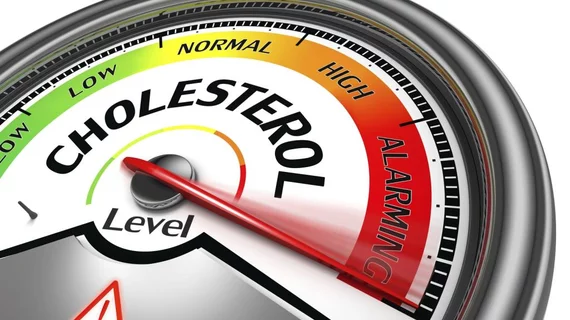Statin use could increase by at least a third under 2013 joint guidelines on cholesterol, according to a study published Nov. 19 in the Journal of the American College of Cardiology.
Guidelines developed by the American College of Cardiology (ACC) and the American Heart Association (AHA) were published in 2013. In an attempt to understand what changes were in store for cardiology, researchers reviewed the National Cardiovascular Data Registry PINNACLE data from 2008 through 2012.
Patients who fell under the guidelines included those with confirmed atherosclerotic cardiovascular disease, diabetes, initial low-density lipoprotein (LDL) cholesterol levels at or above 190 mg/dl, or a 10-year cardiovascular risk of 7.5 percent or more.
Thomas M. Maddox, MD, MSc, of the VA Eastern Colorado Health Care System in Denver, and colleagues noted that during that period, 96.1 percent of patients would have been eligible for statins under the updated guidelines, however, 32.4 percent were not currently receiving statins and 22.6 percent were receiving nonstatin therapies.
Under the new guidelines, instead of attaining a target level of LDL cholesterol, patients should be treated to lower risks for cardiovascular events. In addition, they did not recommend using nonstatin therapies.
The ACC/AHA panel that developed the guidelines did not find evidence to support using nonstatin lipid-lowering therapies to reduce risks for cardiovascular events.
As the new guidelines represented a shift away from targeted cholesterol levels, routine cholesterol testing, they noted, was no longer needed. With cholesterol testing only for initial atherosclerotic cardiovascular disease risk, considerable decreases in the numbers of tests patients undergo would occur. Maddox et al found that 20.8 percent of patients had been tested two or more times for cholesterol levels while 7 percent were tested four or more times in an attempt to lower cholesterol to an approved degree.
By adhering to guidelines, they noted, the reduction of unnecessary tests, treatments and cardiovascular event risk had a number of benefits for patients, providers and the healthcare system as a whole, not the least of which being financial. “The overall net cost of the effect of the new guidelines is complex, as the cost of statin use must be considered against the savings from reduced cardiovascular event occurrence, reduced use of nonstatin therapies, reduced use of statins among patients without indication, and reduced testing,” Maddox et al wrote.
